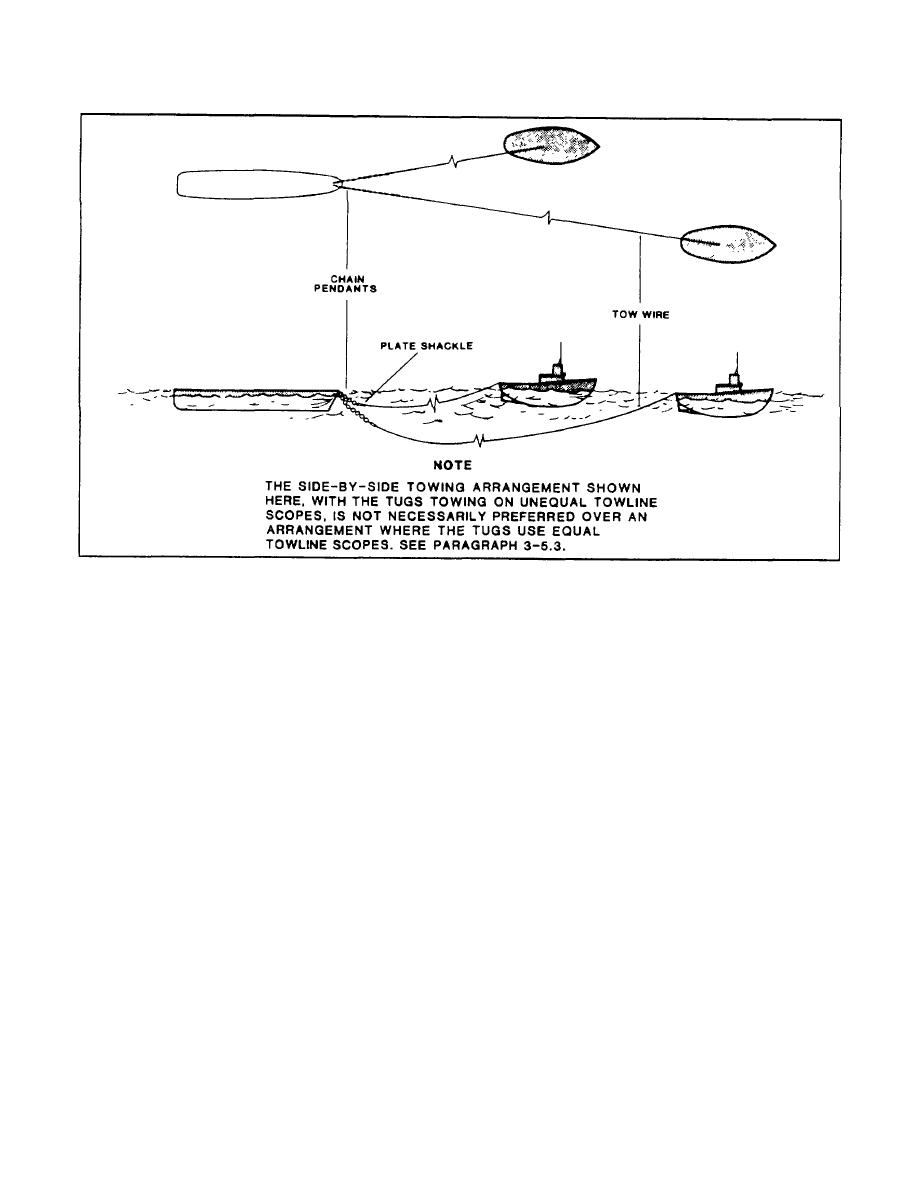
| Tweet |

Custom Search
|
|

|
||
 TB 55-1900-232-10
FIGURE 2-20. Two-Tug Tows.
SECTION V
2-5.5 TOWLINE ATTACHMENT.
2-5.5.1 Basic Tow Attachment Points. The means of attaching the towline connecting system on board the tow is of
vital importance, and must be given careful consideration from the standpoints of both seamanship/rigging and basic
engineering mechanics. If the deck fittings on the tow are there for the specific purpose of towing, operators may
assume that the appropriate engineering was performed. However, in every case, the material condition of the fittings
and structures should be carefully inspected. Some commercial ship designs do not provide for being towed, or the tow
attachment is located somewhere other than originally designed. In this case, the activity preparing the tow must arrange
for engineering assistance to ensure a safe connection. The most important point to consider in such a situation is the
need for an integrated attachment point and fairlead system. The fairlead serves to do just as its name implies-to lead
the towline fair to the attachment point. Pay attention to both the attachment point and the fairlead. Chafing is a
frequent cause of towline failure. Another common failure of the attachment system involves gross structural failure of
either the attachment point or fair-lead. This problem is especially relevant when towing mine craft, vessels constructed
of wood, aluminum or fiberglass and non-oceangoing craft.
The most frequent means of attaching a towline is by means of a padeye. Three distinct types of devices collectively are
referred to as padeyes. Personnel rigging the connection must understand design features. The three types of padeyes
found in towing are as follows
a. Horizontal padeye
b. Vertical, free-standing padeye
2-27
|
||
 |
||